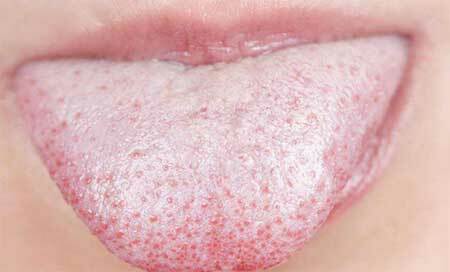Disease of mycosis of the skin is its fungal lesion( see photo).The most common are several varieties:
- Microsporia( in everyday life it is deprived);
- Trichophytia;
- Candidiasis;
- Multicolored lichen;
- Mycosis of feet and brushes as an independent disease.
Contents
- 1 Skin mycosis - what is it?
- 2 Causes of skin mycosis
- 3 Symptoms and signs of skin mycosis, photos
- 4 Treatment of skin mycosis
- 5 Skin mycosis in children
- 5.1 Mycosis prevention
Skin mycosis - what is it?
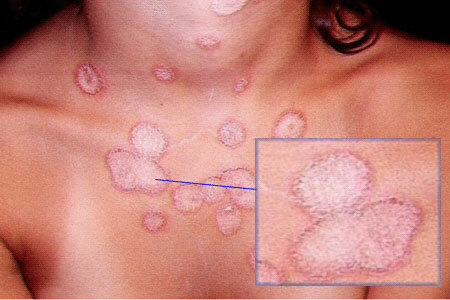
Skin mycosis, photo
Mycosis can be transmitted not only from humans, but also from animals - cats, dogs, rodents, cows, etc. Recently, the role of skin damage by Candida has significantly increased. There are several explanations for this:
- Mass application of antibiotics.
- Poor environmental conditions.
- The use of corticosteroids for the treatment of autoimmune diseases.
In some cases mycosis of the skin and nails proceed with minimal clinical symptoms. Therefore, patients do not turn to the doctor in time for help, which promotes the transition of the disease into a chronic form. This creates significant difficulties for subsequent treatment.
With mycosis of the scalp, the pathological process involves not only the skin but also the hair. The severity of involvement depends on the specific form of the disease.
Therefore, for the early diagnosis of skin mycosis, a person needs to regularly examine his body, without waiting for the emergence of intense subjective manifestations( itching and burning).
Causes of Skin Mycosis
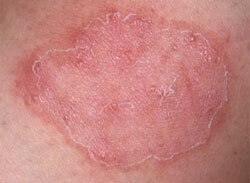 The causes of skin mycosis are fungi. When candidiasis, they are opportunistic. Candida permanently inhabit the human skin, but under certain conditions become the cause of the disease. In all other cases mycosis is associated with pathogenic fungi.
The causes of skin mycosis are fungi. When candidiasis, they are opportunistic. Candida permanently inhabit the human skin, but under certain conditions become the cause of the disease. In all other cases mycosis is associated with pathogenic fungi.
Infection with mycosis occurs in different ways:
- from patients with chronic disease;
- through household items;
- in contact with pets;
- when visiting public baths and saunas;
- when using shared towels, etc.
The presence of predisposing factors in humans significantly increases the likelihood of the disease. These factors include:
- Cracks and abrasions on the skin.
- Dryness of the skin.
- Insufficient body drying after showering.
- Flat feet.
- Narrow interdigital folds.
- Diabetes mellitus.
Symptoms and signs of skin mycosis, photos

mycosis of the skin on the face photo
Fungal infection of the fungus in mycosis has its own specific symptoms, depending on the specific type of pathogen. However, there are common symptoms, knowledge of which will help a person to suspect a fungal infection:
- The lesion can be localized as on a smooth skin( face, neck, chest, forearms) and on the scalp;
- Foci have a round or oval shape;
- A bright red roller is often defined around the periphery( see photo);
- Color of the stain from red-cyanotic to pink;
- Eruptions often flaky.
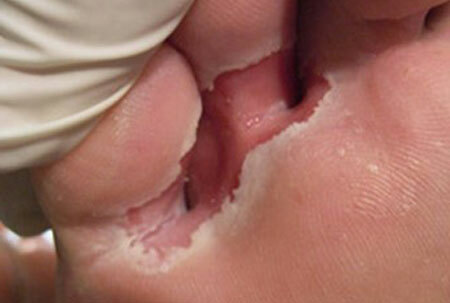
photo of mycosis of foot skin between toes
Symptomatic of mycosis of skin of feet and mycosis of skin of hands differs significantly from the one considered above, therefore we will dwell on it separately. Most often in the pathological process interdigital folds are involved, but there may be inguinal, popliteal and others.
The main signs of the disease are:
- Peeling.
- Redness.
- The presence of vesicles, the opening of which is accompanied by severe pain.
- Intense itching, leading to combing.
- Allergic rashes on the lateral surfaces of the fingers.
Accurate diagnosis of this type of mycosis is done with the help of microscopic examination. It gives the opportunity to determine fungus spores on the skin.
Treatment of skin mycosis
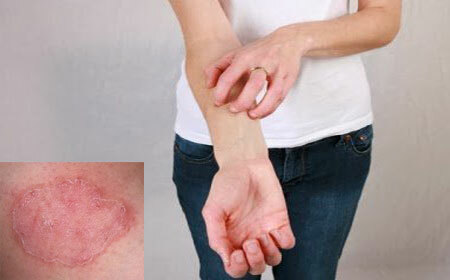
The main direction in the treatment of skin mycosis is antifungal therapy. Depending on the type of disease and the depth of the lesion, these drugs are administered topically or systemically. Often it is necessary to combine these methods with each other.
Simultaneously, the administration of keratolytic agents is required. They improve the process of renewing the skin in places where it is affected. The choice of effective drugs is handled by a dermatologist, self-medication only leads to a waste of time.
It should be remembered that the treatment of skin mycosis with folk remedies does not work, so a specialist should be consulted for any suspicion of this disease.
Mycosis of the skin in children
The most frequent skin mycosis in children is microsporia. In people this disease is called deprive. The causative agent is a fluffy microsporium. He parasitizes the skin of pets that are the cause of infection.
However, in 2% of cases, the disease can be transmitted from a sick child.
Infection with fungi occurs with close contact with animals or objects, contaminated with spores. A common way of infecting children is playing in the sandbox. In the sand microspores persist for a long time, becausethey are very stable in the environment( can remain viable up to 10 years).
Eruptions on smooth skin with microsporia appear one week after infection. Their characteristic features are:
- Oval or round shape.
- The color is pink or red.
- The boundaries are clear.
- There is a roller on the periphery of the rash.
- Coated with crusts and bubbles.
- In the center to peel off.
- The size of the foci is from 1 to 2 cm.
- . In 90% of cases, caned hair can be affected.
The treatment of mycosis in children depends on the involvement of the fleece hair in the pathological process. If they are intact( healthy), then only local antifungal agents are prescribed:
- Alcohol solution of iodine, which is lubricated by the skin in the lesions( in the morning)
- Sulfur salicylic ointment( in the evening)
- Antifungal ointments and creams.
If the same damaging hair and hair, then without the appointment Griseofulvin can not do without. This antimicrobial agent is metabolized in the liver, so the entire period of treatment is carried out biochemical blood tests to monitor hepatic functions, and also prescribed a gentle diet.

Preparation Griseofulvin from mycosis skin
Simultaneously with Griseofulvin, the child is smeared with keratolytic lesions( salicylic or benzoic acid).They exfoliate infected parts of the epidermis and promote its renewal.
To assess the effectiveness of microsporia treatment, a doctor examines the skin of the baby with a fluorescent lamp. In addition, microscopic analyzes of scrapings from lesions can be performed to identify fungi.
Assays are performed several times:
- After the disappearance of clinical manifestations;
- Four days after the first study, which gave a negative result;
- Three days after the previous study.
Microsporia is considered cured if:
- There are no cutaneous lesions;
- There is no characteristic glow in fluorescent light;
- Negative results with a triple microscopic examination.
Not only treatment of mycosis with skin preparations contributes to recovery.
A number of important requirements still need to be observed:
- Boiling for 15 minutes of bed and underwear in a solution prepared on the basis of soap and soda( 10 g of each substance).
- Smoothing clothes through wet gauze( it is recommended to repeat it five times).
Prevention of mycoses
Prevention of skin infections is carried out in several ways:
- Wear only personal clothes( you can not use someone else's).
- Hand washing after contact with pets.
- Early detection of people infected with mycosis by people who are the source of infection.


